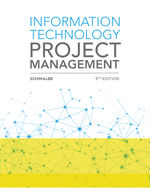This Test Bank is specifically designed to help students and educators with their understanding of networking principles in the context of the 6th Edition of Network+ Guide to Networks by Tamara Dean. The test bank focuses on Chapter 3, which delves into Transmission Basics and Networking Media.
The questions in this resource are organized to test key concepts in networking, including the properties of signals, modulation techniques, and the basic principles of network media and transmission methods. The test bank includes both True/False and Multiple Choice questions, each designed to assess your grasp of essential topics and provide explanations to help reinforce understanding.
Key Features:
- Instant Access: Get immediate access to the test bank as a digital download with no delays.
- Aligned with Textbook: All questions are derived from the 6th edition of Network+ Guide to Networks by Tamara Dean.
- Study Resource: Ideal for exam preparation or educators looking to create practice exams.
- Comprehensive Topics: Covers fundamental networking concepts such as signal characteristics, Ethernet systems, modulation techniques, and transmission methods.
Sample Questions:
True/False Questions:
- The strength of an electrical signal is directly proportional to its frequency.
Answer: False
Explanation: Signal strength and frequency are not directly related. The frequency primarily influences the signal’s behavior and range. - Modulation can be used to make a signal fit a specific transmission medium.
Answer: True
Explanation: Modulation alters the signal to match the characteristics of the transmission medium. - Ethernet operates as a baseband system, which is common in many LANs.
Answer: True
Explanation: Ethernet systems typically use baseband signaling, where signals are sent over a single frequency band. - Latency occurs when a signal on one wire interferes with another signal on an adjacent wire.
Answer: False
Explanation: Latency refers to delays in signal transmission, while interference is a separate issue involving crosstalk. - The maximum distance a signal can travel and still be interpreted accurately is called the segment’s maximum length.
Answer: True
Explanation: The maximum length refers to the greatest distance a signal can travel before significant signal loss or distortion occurs.
Multiple Choice Questions:
- The distance between corresponding points on a wave’s cycle is called its ____:
- A. Amplitude
- B. Frequency
- C. Phase
- D. Wavelength
Answer: D. Wavelength
Explanation: Wavelength is the distance between two corresponding points on a wave.
- A digital signal that consists of a positive voltage pulse represents a ____:
- A. 0
- B. 1
- C. 4
- D. 8
Answer: B. 1
Explanation: A positive voltage pulse represents the binary 1 in digital communication systems.
- The byte 00001110 represents ____ on a digital network:
- A. 3
- B. 6
- C. 14
- D. 30
Answer: C. 14
Explanation: The binary value 00001110 is equal to 14 in decimal.
- In modulation, a wave called the ____ wave is combined with another signal to create a new signal for transmission:
- A. Carrier
- B. Data
- C. Information
- D. FM
Answer: A. Carrier
Explanation: The carrier wave is modulated by the data signal to transmit information over the network.
- When signals can travel in both directions simultaneously over a medium, the transmission type is ____:
- A. Simplex
- B. Half-duplex
- C. Full-duplex
- D. Multiplex
Answer: C. Full-duplex
Explanation: Full-duplex allows simultaneous two-way communication over the same channel.
Why Choose This Test Bank?
- Optimized for Learning: This test bank covers all critical topics in networking, ensuring that you learn effectively by focusing on key areas like signal properties, modulation, and transmission methods.
- Exam Success: With directly relevant questions based on the course textbook, this test bank is your go-to resource for preparing for exams and quizzes.
- Clear Explanations: Every question is followed by a detailed explanation to help you understand the reasoning behind the correct answer.
- Comprehensive Tool: Whether you’re reviewing for an exam or teaching the subject, this test bank offers everything you need to succeed in networking studies.
Enhance Your Networking Knowledge:
This Test Bank is a valuable resource for mastering networking topics. It not only helps you memorize key concepts but also enhances your understanding of networking media, signal transmission, and network protocols. Whether you’re preparing for exams or building a foundation for future networking courses, this test bank will help you excel.













Reviews
There are no reviews yet.